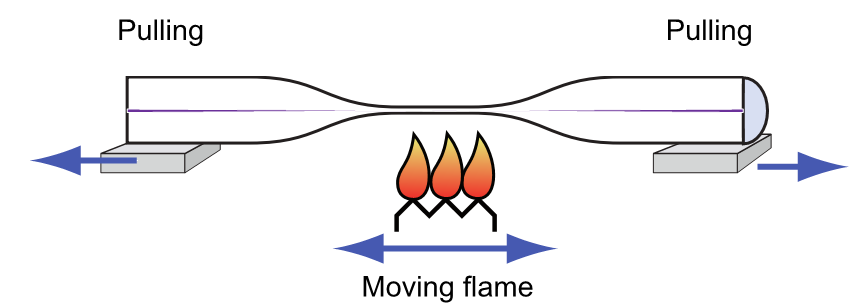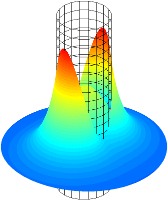Microfibres—optical waveguides with submicrometre diameters—have attracted much interest in the last years. This interest was stimulated by the achievement of low losses in optical fibres with diameters down to few hundreds of nanometres. Subsequently, microfibres have been investigated intensively and a wide range of applications have emerged, e.g. supercontinuum generation, evanescent wave spectroscopy of atoms and molecules, nonlinear light-matter interaction in quantum optics or nonlinear effects exhibited by the microfibre itself.
waveguides with submicrometre diameters—have attracted much interest in the last years. This interest was stimulated by the achievement of low losses in optical fibres with diameters down to few hundreds of nanometres. Subsequently, microfibres have been investigated intensively and a wide range of applications have emerged, e.g. supercontinuum generation, evanescent wave spectroscopy of atoms and molecules, nonlinear light-matter interaction in quantum optics or nonlinear effects exhibited by the microfibre itself.
Microfibres can be produced from standard, commercially available optical fibres by the flame-brushing technique: the fibre is heated to the viscous condition and, simultaneously, pulled at both ends (see Fig. 1). Precise computer-controlled pulling technology yields low-los s tapers and a uniform waist. Contrary to a conventional optical fibre, where the light is weakly guided by the core-cladding interface, strong light guidance by the cladding-air interface occurs in the microfibres. This results in tight confinement of propagating mode and thus in high intensity—not only inside the fibre, but also in its evanescent field, as shown in Fig. 2—and can be compared to a tightly focused beam with an interaction length of up to several centimetres.
s tapers and a uniform waist. Contrary to a conventional optical fibre, where the light is weakly guided by the core-cladding interface, strong light guidance by the cladding-air interface occurs in the microfibres. This results in tight confinement of propagating mode and thus in high intensity—not only inside the fibre, but also in its evanescent field, as shown in Fig. 2—and can be compared to a tightly focused beam with an interaction length of up to several centimetres.
For a quick overview of our activities and a list of open positions, have a look at our flyer (pdf). Or read more about our current projects: single-fibre interferometer and control of organic molecules.
References
- Tong et al., "Subwavelength-diameter silica wires for low-loss optical wave guiding", Nature 426, 816 (2003).
- Warken et al., "Ultra-sensitive surface absorption spectroscopy using sub-wavelength diameter optical fibers", Opt. Express 15(19), 11952–11958 (2007).
- Brambilla, "Optical fibre nanowires and microwires: a review", J. Opt 12, 043001 (2010).
- Wiedemann et al., "Measurement of submicrometre diameters of tapered optical fibres using harmonic generation", Opt. Express 18 (8), 7693 (2010).
- Vetsch et al., "Optical interface created by laser-cooled atoms trapped in the evanescent field surrounding an optical nanofiber", Phys. Rev. Lett. 104, 203603 (2010).
